Premium Only Content
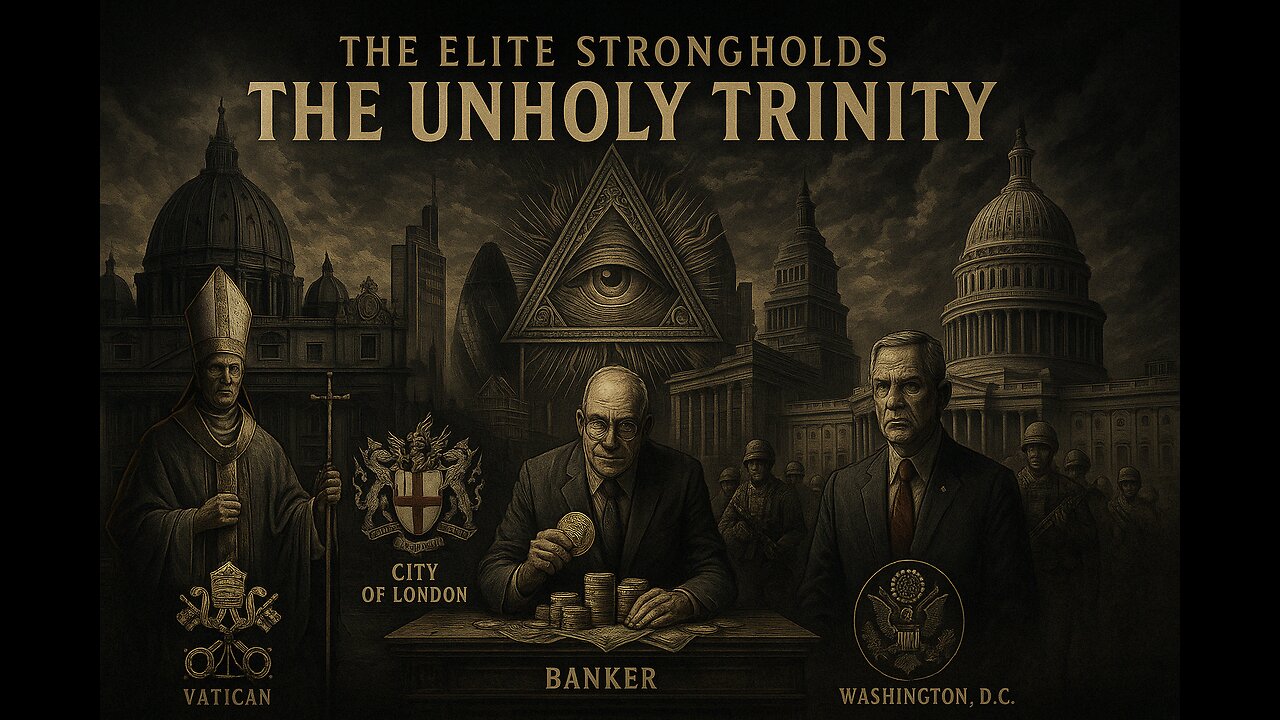
The Elite Strongholds - Unholy Trinity FULL
Welcome to MatrixReprogrammed.com
Key Families and Their Affiliations Across London, Vatican, and D.C.
Elite Family/House City of London (Financial) Vatican City (Spiritual) Washington D.C. (Political)
Rothschild (banking dynasty) Major presence – Established N.M. Rothschild & Sons bank in 1800s; financed British war efforts and projects (e.g. helped Britain buy Suez Canal shares)britannica.com. The family’s Bank of England dealings and City influence made them synonymous with London finance. Some influence – In 1830s became bankers to the Holy See, extending crucial loans to the Papal States. By 1832–1837, Rothschild loans had made them the main fiscal agents for Pope Gregory XVIpublications.aston.ac.uk. Despite being non-Catholic, they gained papal gratitude and a Baron title in Austria; their role illustrates financial interdependence between Vatican and London elites. Indirect – No official role, but via global finance the Rothschilds impacted U.S. affairs (e.g. co-financed the 1895 gold rescue of the U.S. Treasury with J.P. Morganbritannica.com). They had ties to American banking (Kuhn, Loeb & Co. had Rothschild connections). Conspiracy theories aside, the family’s direct influence in D.C. policy was limited, though their global banking network often intersected with U.S. economic interests.
Rockefeller (oil/finance dynasty) Limited direct presence – The Rockefellers were U.S.-based (Standard Oil in Cleveland/NYC), but their financial empire had London connections (City banks handled Rockefeller investments abroad). In recent years, branches of the family (e.g. Rockefeller International) operate in London’s finance sector. Cordial ties – Largely Protestant, the family had no role in Church governance. However, Rockefellers occasionally donated to Catholic causes; notably, David Rockefeller met popes as a global statesman. Some Rockefeller-funded NGOs collaborate with Vatican charities on development. No family member holds Vatican position. Dominant influence – As one of America’s wealthiest families, the Rockefellers heavily shaped U.S. policy. They endowed the Council on Foreign Relations (David Rockefeller was long-time chairman) which influences D.C. foreign policyen.unav.edu. Nelson Rockefeller was Vice President (1974–77). Their foundation’s funding steered domestic and international agendas. Washington’s World Bank saw John J. McCloy (a Rockefeller man) as President in 1947. The family’s think-tanks and personal relationships (e.g. with Kissinger) made them an enduring force in D.C. decision-making.
Orsini / Colonna et al. (“Black Nobility” of Rome) No direct role – These Italian princely families rarely engaged in London affairs. Any financial holdings in London were tangential. Historically, they aligned with the papacy, not Protestant England. Thus, minimal presence in City of London power circles. Highly influential – Part of the Vatican’s Black Nobility, families like the Orsini, Colonna, Massimo have for centuries been entrenched in Rome’s power structure. They produced popes, cardinals, and held high Vatican offices. As of 20th century, they enjoyed dual citizenship (Italian/Vatican)en.wikipedia.org and ceremonial roles (e.g. Prince Orsini as assistant to the Papal Throne). Their palaces in Rome often host Vatican events. They remain informal power brokers in Vatican circlesen.wikipedia.org. None – These aristocratic families did not hold sway in U.S. politics. They might engage socially with U.S. ambassadors to the Holy See, but essentially no influence in Washington. U.S. governance has no hereditary nobility, and these families stay within the European/Vatican realm.
Bush Family (American political dynasty) No City role – The Bushes’ wealth came from U.S. oil and business (e.g. partnerships with UK firms were through New York or Texas, not via the City). While George H.W. Bush as president engaged with London’s PMs on policy, the family did not control City institutions. Modest ties – George H.W. Bush and George W. Bush are Episcopalian/Methodist; not Catholic insiders. However, Jeb Bush (son of G.H.W.) converted to Catholicism and has interacted with Vatican officials as a Catholic statesman. The Bush presidency forged good relations with Pope John Paul II (common stance against communism and for religious values), but the family held no formal Vatican positions. Very powerful – Produced two U.S. Presidents (George H.W. and George W.) and influenced policy for decades. G.H.W. Bush was also CIA Director and VP. Their presidencies oversaw the Gulf War, War on Terror, etc. The Bush network (including allies like Dick Cheney and James Baker) deeply penetrated Washington’s defense and energy policy establishment. Through elected office and appointments, the Bush family and its circle wielded great control over D.C.’s direction, especially in national security. Notably, both Presidents Bush were Skull & Bones alumnibritannica.com, connecting them to an Ivy League secret society with other D.C. elites.
House of Windsor (British Royal Family) Ceremonial influence – The monarch is the Duke of Lancaster and has historical ties with the City’s Corporation. The Windsors attend the Lord Mayor’s Banquet and confer honors on City financiers. City loyalty to the Crown remains strong (the City’s Remembrancer ensures royal interests in Parliamentinvestopedia.com). However, the Windsors do not dictate City policy – their role is symbolic (e.g. Queen Elizabeth II’s regular visits to open new financial exchanges). Indirectly, royal asset management (the Crown Estate) and friendships with banking chiefs give them insider influence. Historical tension, later rapprochement – As Heads of the Church of England, British monarchs traditionally had a complex relationship with the Catholic Church. Since the 20th century, relations warmed: e.g. Prince Charles (now King Charles III) has visited popes and shown interest in interfaith dialogue. The Windsors have no governance role in Vatican City. Elite Catholics in Britain (like the Duke of Norfolk) serve as liaisons, but the royal family itself has minimal direct sway on the Vatican, aside from diplomatic niceties. Allied influence – The “Special Relationship” means the British monarch and royals often engage in state visits that bolster U.S.-UK ties. While they have no political power in D.C., state visits by Queen Elizabeth II, for instance, were major diplomatic events. Royal soft power (charisma, public appeal) can subtly aid British diplomatic objectives in Washington. The Windsors maintain personal relationships with American elites (Charles with various presidents, Prince Harry and Meghan living in the U.S., etc.), but constitutionally they do not interfere in U.S. policy.
Morgan Family (American/Anglo-American bankers) Significant influence – J.P. Morgan & Co. had a London-based affiliate (Morgan Grenfell) and close ties to City of London bankers. J.P. Morgan himself often coordinated with the Bank of England and City syndicates; his firm became one of the world’s most powerful banking housesbritannica.combritannica.com. In financing WWI for the Allies, Morgan’s London connections were critical. Even after Morgan’s death, the Morgan bank (later Morgan Stanley, J.P. Morgan Chase) has a strong presence in London’s financial district. Minimal – The Morgans were not Catholic power-players. However, interestingly, J.P. Morgan’s father Junius partnered with London banker George Peabody, who was a philanthropist to many causes – but none specific to Vatican. No Morgan is recorded as having influence in Vatican affairs. Extremely influential – The Morgans effectively bankrolled aspects of the U.S. government. In 1895, J.P. Morgan’s syndicate saved the U.S. Treasury from collapsebritannica.com, giving him enormous sway in D.C. financial policy. He advised presidents and was instrumental in the creation of the Federal Reserve (1913) by convincing elites a central bank was needed after the Panic of 1907 (which Morgan had quelledbritannica.com). Morgan and partners were fixtures in Washington economic councils. Later generations (e.g. Henry Stimson, a Morgan lawyer, became Secretary of War) kept the influence alive. Today, JPMorgan Chase CEO jamie Dimon is an informal advisor in Washington on economic matters.
Medici (Renaissance Italian dynasty) Historical only – The Medici ruled Florence, not London, though they traded across Europe. In the 17th century, a Medici princess (Maria de’ Medici) became Queen of France, but no Medici directly impacted City of London governance. Historical but notable – Provided two Popes (Leo X and Clement VII) who dominated the Vatican in the early 1500s, turning it into a center of Renaissance art and Medici political interestsen.wikipedia.org. The family lost influence after the 16th century in Church politics. By Vatican City’s 1929 formation, the Medici were long gone, but their legacy is emblematic of powerful families controlling the papacy in earlier eras. None – The Medici era predates the United States. They are relevant only as a historical example (patrons of science and art that indirectly influenced the development of Western ideas that America’s founders admired). No direct role in U.S. affairs.
Table: Several key families and dynastic networks that have played roles in one or more of the three elite centers. It shows that some (like the Rothschilds) bridged London and Vatican finance, while others (like the Bushes) operate mainly in the U.S., and others still (Black Nobility) are specific to the Vatican.
Major Secret Societies and Orders Linked to Each City
Secret Society / Order City of London 🇬🇧 (Financial Hub) Vatican City 🇻🇦 (Spiritual Hub) Washington D.C. 🇺🇸 (Political Hub)
Freemasons (Masonic Order) Strong presence: London is the birthplace of modern Freemasonry – the first Grand Lodge was founded in 1717 in a London tavernhistory.com. Many City merchants and Lord Mayors were Masons. Masonic influence is seen in City traditions and architecture (the Great Fire monument laid by Masons, etc.). The United Grand Lodge of England is headquartered in London, and numerous lodges meet in the financial district. Masonic networks provided trust and solidarity among City elites. Officially barred: The Catholic Church has opposed Freemasonry since 1738; Catholics (especially clergy) are forbidden to be Masons. Nevertheless, a secret Masonic lodge P2 (Propaganda Due) in Italy infamously involved Vatican figures in the 1970s. P2’s influence peaked with the Vatican Bank scandal, where its members (like banker Roberto Calvi) laundered money and Calvi was found dead under Blackfriars Bridge (the word “Blackfriar” hinting at Masonic imagery)worldfinance.com. While not an approved Vatican society, the P2 affair showed that clandestine Masonic activity did reach into the Vatican’s financial and diplomatic ranks, a grave concern for the Church. Deep roots: Freemasonry was woven into Washington’s foundation – George Washington and many founding fathers were Master Masons. The Capitol cornerstone ceremony was a full Masonic riteaoc.gov. The city’s layout has been speculated to contain Masonic symbols (like the compass pattern of streets). Several presidents and congressmen have been Freemasons, using fraternal bonds to network. Even today, Masonic lodges in D.C. count influential government officials as members. Masonic ideals (Enlightenment, liberty, fraternity) helped shape American governancehistory.com.
Knights Templar (historical order) Historical legacy: The Knights Templar’s medieval headquarters in England was the Temple area of London – the order built Temple Church and managed financial transactions for Crusaders. The round Temple Church (consecrated 1185) still stands as a reminderlivinglondonhistory.com. After the Templars were dissolved in 1312, the Inner and Middle Temples (legal inns) took over their London propertiesen.wikipedia.org. In a sense, the City’s legal community inherits the Templar site. Some lore claims Templar treasures or knowledge flowed into City guilds and Masonic lore. Today, “Temple Bar” marks the boundary of the City, echoing Templar influence. Suppressed but symbolic: The Knights Templar were under Papal authority until their suppression by Pope Clement V in 1312 under pressure from King Philip IV of France. The Vatican absorbed some of the Templars’ wealth (much went to the Knights Hospitaller). The dramatic end of the Templars (with Grand Master Jacques de Molay burnt at stake) lives on in Church legend. While the Vatican has no Templar order today (modern groups called “Templars” are revivals or Masonic appendant bodies), the mystique of the Templars often features in Vatican conspiracy theories. The Church eventually created other knightly orders (like the Order of the Holy Sepulchre) to fill similar roles. Inspirational myth: No active Templar order in D.C., but the concept permeates American secret society mythos. The York Rite of Freemasonry in the U.S. includes a Knights Templar degree, tying American Masons to the chivalric lore. Washington’s Georgetown area has legends of Templar treasure (though unfounded). In modern times, some U.S. military or veterans’ groups draw on Templar symbolism for camaraderie. Overall, the Templars’ legacy in D.C. is indirect—primarily through their influence on Freemasonry which in turn influenced the city’s founders.
Jesuits (Society of Jesus) Educational footprint: The Jesuits’ influence in London’s City is mainly via education and advising rather than governance. They were suppressed in the 1700s, so for a time had no presence. In the 19th century, Jesuits returned to England and ran elite schools (like Stonyhurst) that educated some of Britain’s Catholic gentry (though most City financiers were Protestant). Indirectly, Jesuit-trained individuals (from Europe) in the City’s banks or diplomatic circles could bring their ethos. But the Jesuit order did not openly shape City of London policies. Powerful within Church: The Jesuits have been called the “Pope’s shock troops.” Founded in 1540, they became influential as missionaries, educators, and confidential agents of the Pope. By the 17th–18th centuries they held great sway in Catholic courts, prompting their suppression in 1773 due to political intriguexavier.edu. Restored in 1814, they have since been key advisors in the Vatican. The Jesuit Superior General (often dubbed the “Black Pope” informally) oversees a global network of universities and clergy. Notably, Pope Francis is a Jesuit – indicating the order’s restored prominence. The Jesuits today often guide Vatican policy on theology, science, and social justice. Their intellectual rigor and disciplined structure make them one of the most influential orders within the Vatican’s power structure. Quiet influence: In the U.S., Jesuits have been influential through their universities (e.g. Georgetown in D.C., Fordham in NYC). Georgetown University in D.C., founded 1789, became a training ground for American and foreign elites (Bill Clinton, for instance, is an alumnus). Through education and personal networks, Jesuit values and contacts permeate Washington. High-ranking Jesuits occasionally advise U.S. policymakers informally, especially on human rights or foreign affairs (sometimes via the Jesuit Refugee Service or similar). Several top U.S. intelligence and diplomatic figures were Jesuit-educated, reflecting the order’s indirect role. However, the Jesuits operate more as a moral and intellectual influence in D.C., rather than a secret society manipulating policy.
Knights of Malta (SMOM) Selective presence: The Sovereign Military Order of Malta, though based in Rome, has members in the UK (British aristocrats and prominent Catholics). Some British Knights of Malta have ties to City banking and charity. For example, the order’s hospitaller work garners donations from City philanthropists. However, the Order of Malta doesn’t direct City financial policies. Its London events are more about charitable fundraising and elite socializing (occasionally including City financiers who are members). Integral part of Vatican network: The Knights of Malta are a Catholic chivalric order under Vatican protection, historically formed during the Crusadesconcordatwatch.eu. By the 20th century, SMOM became a predominantly honorary order for Catholic nobility and distinguished figures. They maintain sovereign status (issuing passports, having diplomatic relations). Many cardinals and Vatican officials are Knights or work closely with them. The Order often serves the Holy See diplomatically; e.g., Knights of Malta envoys can perform sensitive missions. Their membership includes high-ranking clergy and Catholic lay elites (e.g. in the 20th century, Pope John XXIII and several influential cardinals were Knights). The Order’s hospitals and humanitarian missions expand Vatican soft power. Scandals have arisen (in 2017 a clash between the Order’s Grand Master and the Pope over internal governance), showing the Vatican’s ultimate say. Overall, SMOM acts as an extended arm of Vatican influence, with a hint of secret-society exclusivity given its aristocratic membership and ceremonial secrecy. Embedded with U.S. elite: In Washington, the Knights of Malta have long had extraordinary connections. Many prominent American Catholics, including politicians, military and intelligence officials, are Knights. Notably, William “Wild Bill” Donovan (OSS founder) was a Knightconcordatwatch.eu, as was FBI Director J. Edgar Hoover and CIA chiefs like Allen Dulles (honorary). Through these individuals, a Malta network existed in mid-century Washington that facilitated cooperation with the Vatican (e.g., WWII espionage and post-war anti-communist efforts often saw Knights of Malta acting as liaisonsconcordatwatch.eu). The American Association of SMOM, headquartered in NYC but influential in D.C., includes business magnates and former diplomats. While the Order’s role is largely charitable and honorific, the common knighthood has provided a behind-the-scenes fraternity linking U.S. and Vatican-aligned policymakers. Their diplomatic status can give cover for discreet negotiations. In summary, Knights of Malta in D.C. represent a nexus of faith, charity, and covert networking among the Catholic and politically connected elite.
Skull & Bones (Yale secret society) No footprint – Skull & Bones is a U.S.-centric collegiate society with no direct presence in London. City of London elites historically attended Oxbridge, not Yale, so Bonesmen have little to do with London’s guilds or finance clubs. No footprint – As a secular student society, it has no role in the Vatican. (Though interestingly, some Bonesmen like Prescott Bush were Protestants who opposed Catholic candidates in 1960, indicating more rivalry than collaboration with Catholic elites of that era.) Significant influence – Skull & Bones has arguably punched above its weight in American politics. Based at Yale University, it has produced a disproportionate number of D.C. power players: at least three U.S. Presidents were Bonesmen (Taft and both Bushes)britannica.com, along with senators, cabinet secretaries, Supreme Court justices, and CIA officials. The society’s ethos of elitism and loyalty means members often advance each other’s careers. For example, during George W. Bush’s presidency, fellow Bonesman William Donaldson was appointed head of the SEC, and many advisors (though not all Bonesmen) were Ivy League compatriots. While Skull & Bones itself operates only on campus, its alumni network in Washington is like a quiet brotherhood – they recognize the shared bond and, by unwritten rule, maintain secrecy about the society’s rituals and connections. Its presence highlights how elite educational fraternities feed into the U.S. power structure, ensuring that key institutions (CIA, Wall Street, State Department) have insiders who trust each other.
Opus Dei (Catholic prelature) Minor presence: Opus Dei, founded in 1928 in Spain, reached the UK decades later but remains relatively small there. It has some members in London’s professional circles (lawyers, bankers) and runs Netherhall House (a student residence in London). It’s not openly tied to City power, but any high-ranking City figures who are members would keep a low profile (as per Opus Dei’s often discreet approach). No known Opus Dei members have led the City Corporation or major UK banks publicly. Substantial influence: Opus Dei is a personal prelature of the Pope, consisting of lay members and clergy who promote holiness in ordinary life. Under John Paul II, Opus Dei gained favor – he canonized its founder, and Opus Dei members assumed influential roles in the Vatican (e.g. managing Vatican press office, banking, etc.). Often seen as conservative and secretive, Opus Dei is thought to wield clout in decisions on doctrine and finance. For instance, the Vatican’s 1980s financial clean-up was spearheaded in part by Opus Dei consultants. Several bishops and at least one cardinal (Julian Herranz) in the Curia are Opus Dei. The group’s strongholds in Spain and Latin America also give it global Church influence. Though not “secret” in intent, Opus Dei’s private spiritual meetings and its practice of not disclosing members create an aura of secrecy, and it has been accused of forming an elite “church within the church.” Quiet but notable: In Washington, Opus Dei has a presence primarily through influential Catholic laypeople. Several U.S. politicians and Supreme Court justices have been associated with Opus Dei or its events (for example, Justice Antonin Scalia had ties to Opus Dei circles; Justice Amy Coney Barrett has been likened to Opus Dei though she’s actually in a different Catholic group). Opus Dei runs the Catholic Information Center, a block from the White House, which functions as a hub for conservative D.C. Catholics – attracting policymakers for lectures and prayer. Elite figures like former FBI Director Louis Freeh and Senator Sam Brownback have been reported as Opus Dei members or cooperators. The organization’s emphasis on integrating faith and professional work appeals to devout Catholic power-brokers. While membership is private, Opus Dei’s network in D.C. works to shape policies on social issues (abortion, religious freedom) and supports a cadre of highly educated, morally conservative individuals in government and law. It provides a transnational link as well – an Opus Dei congressman in D.C. is spiritually connected to Opus Dei financiers in Europe, all aligning with the Vatican’s conservative wing.
Table: A comparison of secret or semi-secret groups and orders and their roles in each of the three cities. It highlights how some groups (Freemasons, Knights of Malta, etc.) have a presence or influence that spans multiple centers, whereas others are specific to one arena.
-
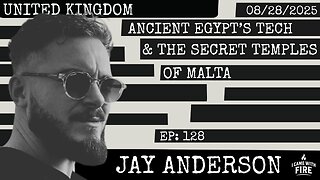 LIVE
LIVE
I_Came_With_Fire_Podcast
11 hours agoAncient Egypt's Tech & the Secret Temples of Malta
382 watching -
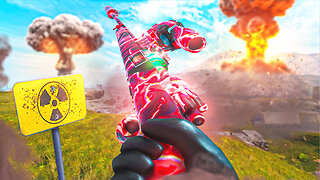 LIVE
LIVE
GritsGG
1 hour agoWin Streaking! Most Wins 3499+ 🧠
167 watching -
 DVR
DVR
Bannons War Room
6 months agoWarRoom Live
34.1M8K -
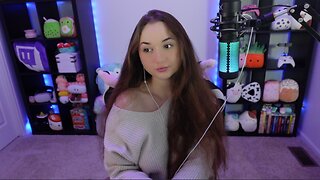 LIVE
LIVE
ttvglamourx
1 hour ago $0.28 earnedPLAYING WITH VIEWERS !DISCORD
83 watching -

VapinGamers
1 hour ago $0.46 earnedTools of the Trade - Of Thumbnails and Titles, What's Important? - !rumbot !music
7.4K -
![Mr & Mrs X - [DS] Trafficking Empire – How Epstein Built His Web of Wealth and Deceit:Part 1 - Ep 5](https://1a-1791.com/video/fww1/f0/s8/1/o/k/J/d/okJdz.0kob-small-Mr-and-Mrs-X-DS-Trafficking.jpg) 52:11
52:11
X22 Report
3 hours agoMr & Mrs X - [DS] Trafficking Empire – How Epstein Built His Web of Wealth and Deceit:Part 1 - Ep 5
70.1K15 -
 1:13:18
1:13:18
Wendy Bell Radio
7 hours agoPet Talk With The Pet Doc
42.4K61 -
 LIVE
LIVE
dieseldesigns
5 hours agoExploring Labs In the DARK! // Abiotic factor
20 watching -
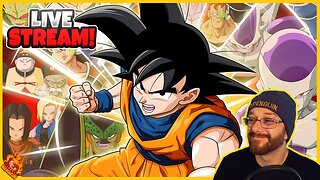 LIVE
LIVE
BBQPenguin_
4 hours agoDragonball Z - The Android Saga
125 watching -
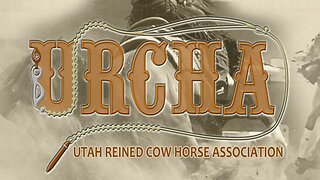 LIVE
LIVE
Total Horse Channel
5 hours ago2025 URCHA Futurity | Derby & Horse Show | Saturday
38 watching